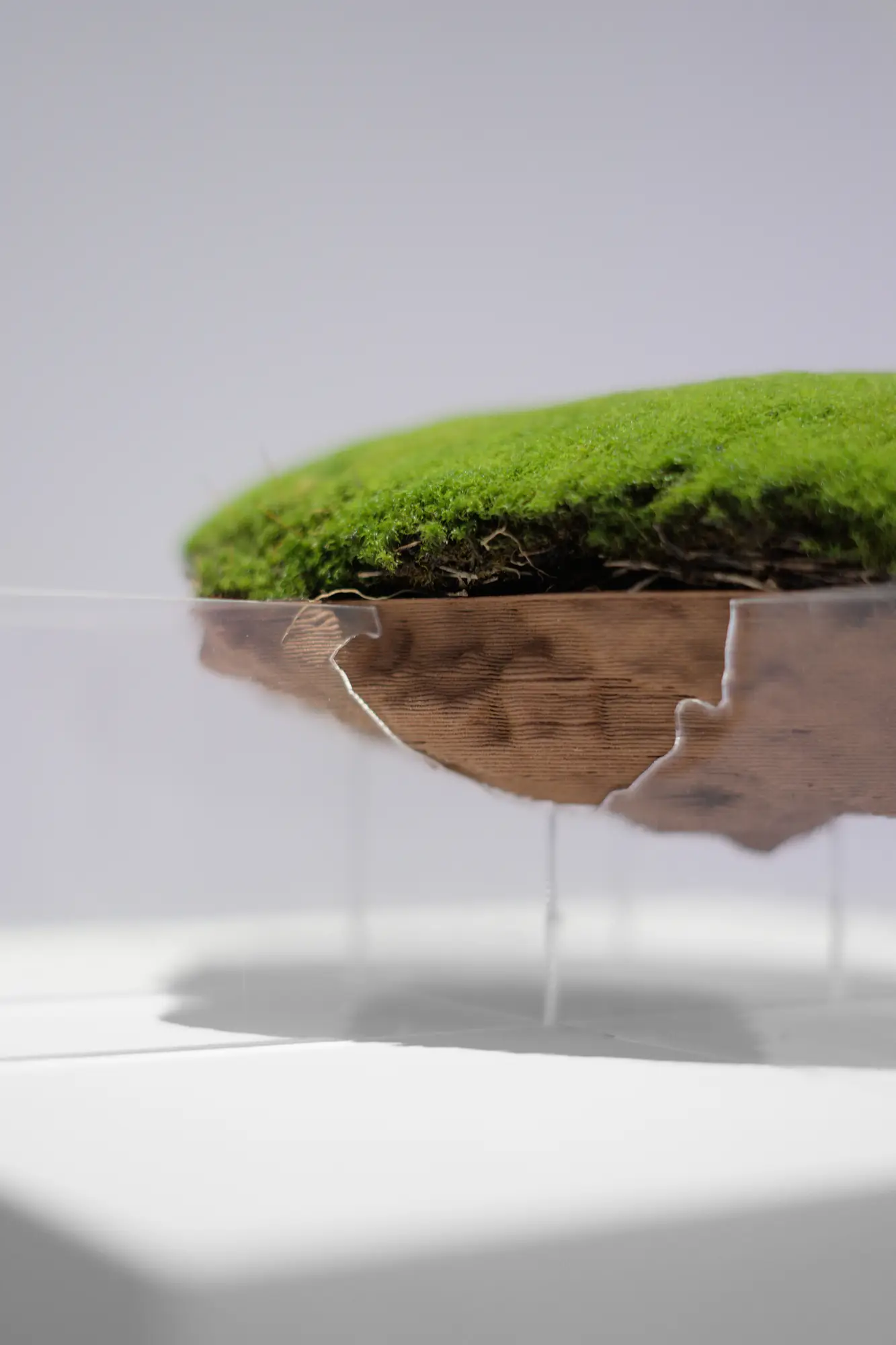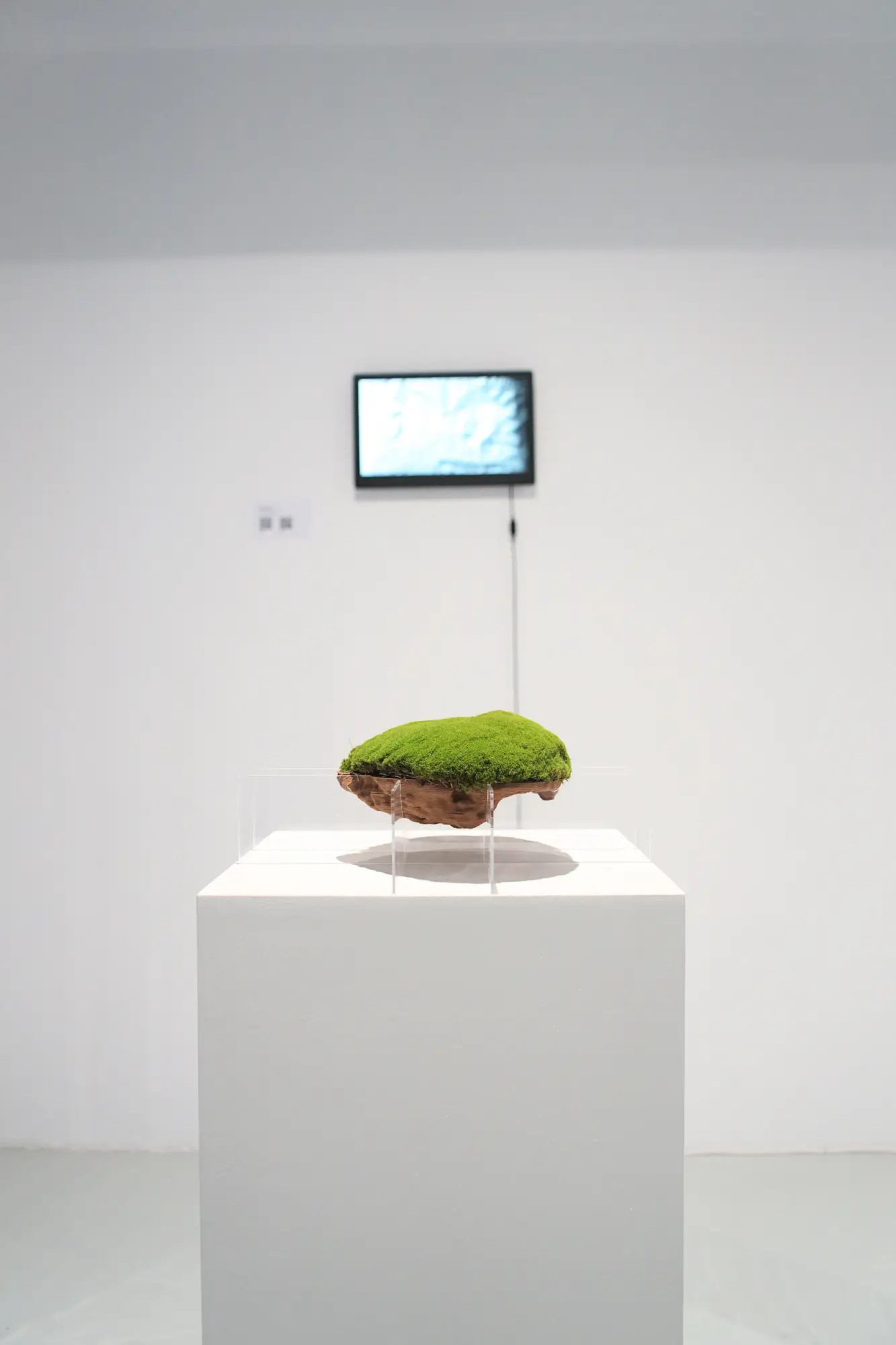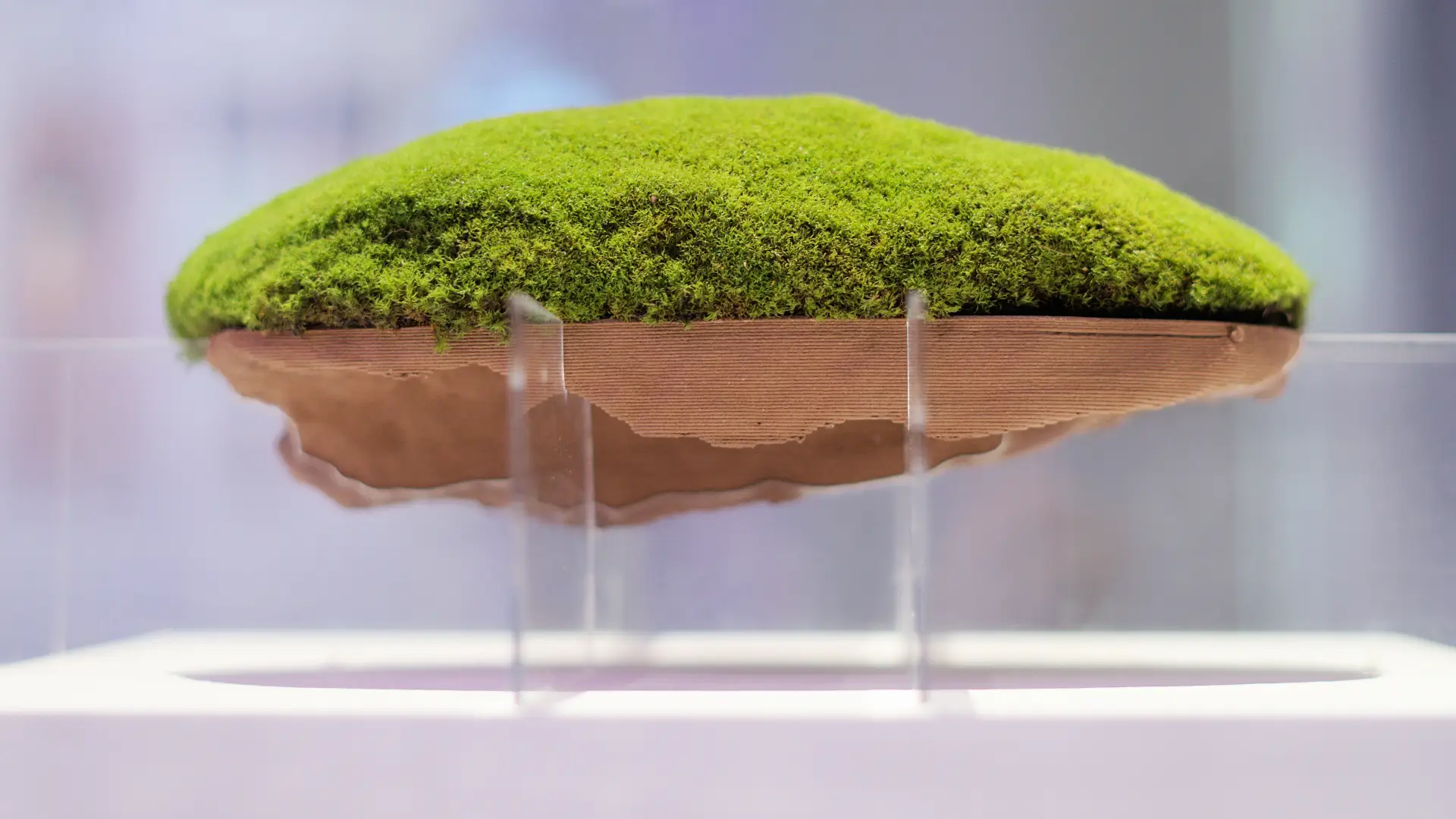Potenziale
October 2021The Potenziale III was the first exhibition in my research process to create a mutualistic relationship with our non-human environment and is supposed to demonstrate the beneficial properties of an often overlooked organism: Moss. It has, on the one hand, the capability of filtering Pollutants and fine particles from the air through its' high surface area and specific metabolism. At the same time, it can regulate air humidity levels and in a larger scale even reduce soil degradation caused by erosion.
These topics become more and more relevant considering the constantly growing human settlements, the concomitant demand for food as well as rising global temperatures and extreme weather evens caused by climate change. During my master thesis, where I investigated the large-scale effects of erosion and water pollution in Kathmandu, I came to the insight that the way we design our environment can be directly linked to the way we affect it.


I believe when we are re-designing existing patterns of inhabitation it is essential to include non-human partners in this process in order to mitigate the negative effects of human development on the biosphere. In this sense, Moss is only one of many possible organisms to develope a mutualistic relationship with, but no matter what organism, we deeply have to understand their properties and possible feedback loops on all scales to be able to create new patterns of mutualistic co-habitation with our non-human environment which is able to behave in a truly sustainable way.


